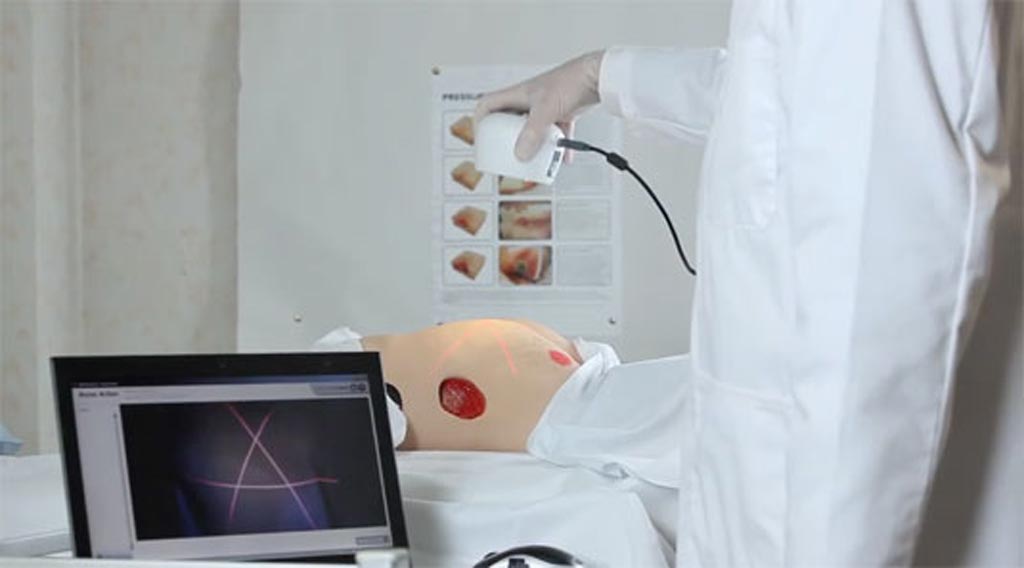Imaging Apps Provide Wound Assessment and Documentation
By MedImaging International staff writers
Posted on 11 Apr 2018
A suite of smartphone based imaging and documentation apps allow doctors and community-based nurses to track patient wound healing.Posted on 11 Apr 2018
The Applied Research Associates NZ Medical (ARANZ Medical; Christchurch, New Zealand) Silhouette eco-system includes the wireless SilhouetteStar camera, a laser-guided three-dimensional (3D) measurement camera for wound photography and documentation, the Silhouette 4.0 web-based user application, and the SilhouetteLite and SilhouetteLite+ applications. The SilhouetteLite app is intended for simple wound imaging and notes using Apple iPads and iPhones, while the SilhouetteLite+ app is intended for wound imaging, two-dimensional (2D) non-contact wound measurement, and more detailed notes.

Image: A camera-based system provides accurate wound measurements (Photo courtesy of ARANZ Medical).
All of the products in the Silhouette eco-system connect with a cloud-based proprietary database called the SilhouetteCentral data repository, which enables providers to review, report, securely share, and analyze data collected by Silhouette point-of-care devices. SilhouetteCentral software can be accessed using the Microsoft Internet Explorer web browser. Silhouette can also export data in a standard .csv file format, and can interface with other electronic medical record (EMR) systems using standard formats, including HL7 and DICOM, and is designed to support HIPAA compliance.
“Silhouette enables healthcare providers to easily transition to rapid quantitative wound assessment. The new Silhouette products make field-based assessments easier and the data accessible at the speed of telemedicine, enabling centralized staff to instantly access data and improve the care of their patients,” said Bruce Davey, MD, CEO of ARANZ Medical. “We design our products with patients and their caregivers at the forefront of our minds. It just makes good sense for patients to be assessed whenever possible in their own community or homes.”
An essential part of weekly wound assessment is measuring the wound, and consistent technique is vital for accuracy. The most common type of measurement is linear measurement, also known as the “clock” method, measuring the longest length, greatest width, and greatest depth of the wound, using the body as the face of an imaginary clock. However, such linear methods are inaccurate, as they do not take into account changes in wound shape and depth.
Related Links:
Applied Research Associates NZ Medical














